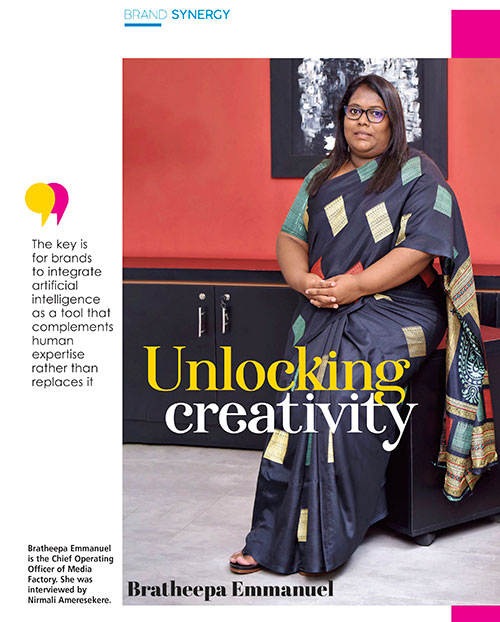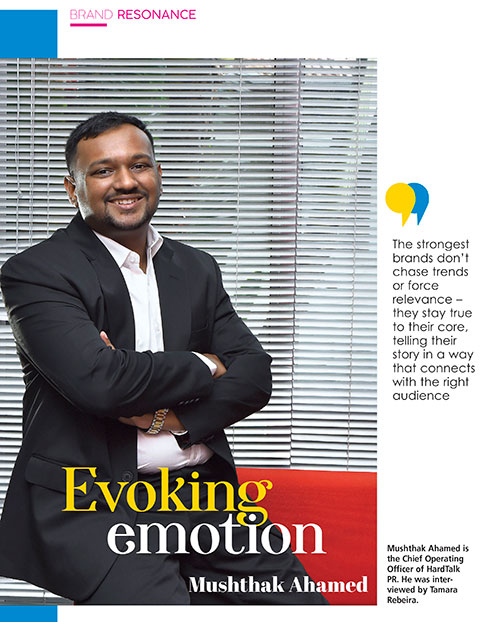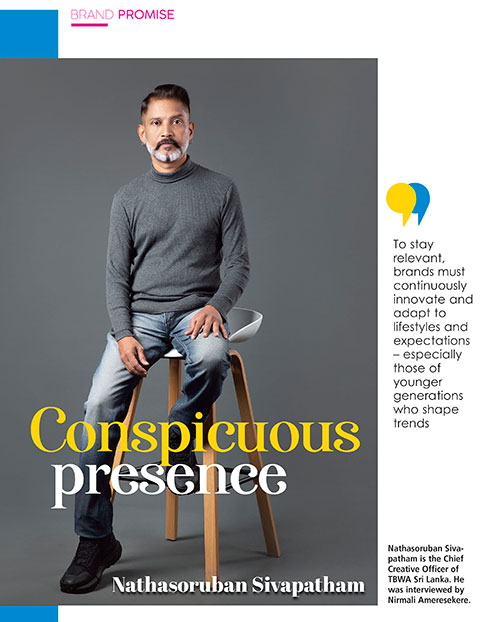BRAND POWER
UNLOCKING THE SECRETS OF GLOBAL BRANDS
Prashanthi Cooray offers insights into what makes the world’s most valuable brands tick
Best-selling author John Morgan, in his book Brand Against the Machine, writes: “Branding is not just about being seen as better than the competition. It’s about being seen as the only solution to your audience’s problem.”
This philosophy is at the heart of the world’s most valuable brands.
The 2025 Brand Finance Global 500 highlights familiar names such as Apple, Microsoft and Google – companies that stand out not only for their impressive valuations but also their ability to stay ahead by connecting with consumers, adapting to change and remaining relevant on a global scale.
Take Apple, for example. Valued at over US$ 574 billion, Apple’s success transcends its products or technology. Every detail – from the interface of an iPhone to the design of an Apple Store – reflects a cohesive brand experience built on simplicity, innovation and premium quality. The half bitten apple logo is one of the most recognisable symbols in the world and embodies the trust Apple has cultivated with consumers.
Microsoft and Google follow closely behind in terms of brand value. Few brands hold the same level of gravitas and credibility as Microsoft, whose transformative innovation has shaped the way we work, connect and move through the digital world.
Meanwhile, Google thrives on simplicity. Its playful multicolour logo has barely changed since 1998, yet it remains instantly identifiable.
Technically, Google is a brand name – a noun. Yet, we use it as a verb. It’s our ‘go to’ phrase whenever we want to look something up online. This shift is a fascinating milestone in branding, where a name becomes so familiar that it evolves into a part of everyday language, signalling market dominance and cultural integration.
As marketing guru Ashley Friedlein puts it, “a brand is the sum total of how someone perceives an organisation.”
NVIDIA embodies this idea, having joined the ranks of the top global brands after nearly doubling its brand value to 88 billion dollars.
Once known for gaming hardware, it has since repositioned itself as a leader in AI innovation. Its sleek green eye shaped logo reflects a brand built on speed, vision and cutting-edge technology.
Thanks to the rise of short-form video and its diverse content, TikTok has become a key platform for driving brand awareness. Its popularity among younger audiences, paired with the potential for content to go viral overnight, offers brands visibility unmatched by other social media platforms.
Facebook and Instagram, also among the world’s most valuable brands, have followed a similar path. Once simple platforms for social connection, they’ve evolved into tools that influence consumer behaviour and drive purchasing decisions.
In the motor industry, Toyota’s strong sales performance and focus on hybrid vehicles continues to resonate with consumers seeking fuel efficient options. Meanwhile, Mercedes-Benz – with its reputation for quality, innovation and prestige – dominates in the luxury segment.
Even legacy brands are proving that reinvention is possible – for example, BBC made a return to the Global 500 this year. The broadcaster’s digital transformation and focus on viewer driven content reflect how the brand is adapting to consumer needs while retaining its reputation for journalistic integrity.
From Coca-Cola’s bold red and McDonald’s golden arches, to Nike’s swoosh, Samsung’s sleek minimalism and Visa’s trusted emblem – iconic logos help define a brand.
But they’re only part of the story…
The true power lies in consistency, clarity, emotional connection, innovation and cultural relevance.
Looking ahead, brands must navigate the challenges of technological change, geopolitical uncertainty and evolving consumer expectations.
As branding expert and author Simon Mainwaring aptly puts it, “branding is about shaping perception.” And in today’s dynamic landscape, the most valuable brands are those that not only adapt to these challenges but also shape how they’re understood and trusted.






